Scotland Trip Part 2
- On August 6, 2019
Next, we went to the Isle of Skye. On one of our hikes along the Quiraing, we noticed a handful of divots in the path where sheep sometimes scratch their backs or lay in the ground. While passing one, we noticed the unique, pungent smell emanating from the exposed ground. It was earthy, iodine, and poop-like, with hints of sweet grass and salt. The smell and character of peat instantly clicked. The odor is instantly recognizable in Talisker whisky, made on the Isle of Skye.
From Skye, we took our pilgrimage to Islay, home of the peated style whiskeys. First, Bruichladdich. They are a recently revived distillery, now owned by French company Remy Cointreau, but with a gentle touch. They use almost all original equipment including one oldest grain mills in use today, and the giant banner hanging in the entrance highlights the people who make the whisky, a clear indication against the push button, computer-operated
distilleries from a certain large company. Bruichladdich is growing barley throughout the island for their Islay single malts, testing different cultivars for heartiness. In fact, our Airbnb was overlooking one such field. Most other distilleries import barley from throughout Europe. And while Bruichladdich is not malting on-site yet, they are in the final stage of plan approval for a malt house. They are pursuing a happy medium between modern production and keeping things the way they have always been.
The next day, we started out at Bunnahabhain. The distillery is along one road on the Northeast corner of the island, also under major construction and expansion. Despite being on Islay, they are not known for a smoky style. However, in their visitor center, they had single cask, distillery exclusive bottlings, two of which were “mòine,” Scottish Gaelic for peat. We got there right as they opened at 9 am and were able to try every whisky on their shelves but we could not buy any until 10am by law. Oh well! Bring a snack and enjoy a dram on their dock.
On the road out, we were able to peek at Ardenhoe, the ninth and newest distillery on Islay, and Caol Ila, currently shut down to visitors. Our next stop was Kilchoman, the first distillery built on Islay in 124 years in 2005. They call themselves Islay’s Farm Distillery and their 100% Islay range is entirely from their own farms. Their distillery has a rustic feel despite being brand new and they recently expanded to have four pot stills from two. While not all of their barley is malted on site, other malts come from the Port Ellen malting facility on the island, owned by Diageo.
A contentious point in the tour happened in with the washbacks or fermentation tanks. Being a new distillery, they used stainless steel. This is common in the wine industry and makes for easier disinfection between batches. However, everyone else uses wood tanks, essentially giant barrels, and replace individual staves when necessary. Wood has pores and seams, and can also leak. They require more maintenance and can lead to inconsistencies in production, increasing costs. One person on the tour felt it was sacrilegious to use anything other than wood. Also, during the tasting at the end of the tour, we noticed the water had a slight tint and earthy flavor to it. This is the same water the distillery uses for making whisky and shows the true “of the earth” character that goes into their whiskeys.
Next, we crossed the island, past the behemoth Port Ellen malting facility, to Ardbeg. Ardbeg is owned by Glenmorangie, and thus LVMH. Despite large company ownership, their production was quite small with only two stills and using an old Robert Boby grain mill, same as Bruichladdich. They get their malts from Port Ellen as well but claim to have lighter peat character. They attribute this to a purifier on the top of the lyne arm, that allows the heavy peat particles to fall back into the base of the still. True or not, they will continue to use that style of pot still forever. Our tour guide told us a story about a Speyside distillery that uses a pot still with a giant dent in the side. When it came time to replace the still, it was crafted with that same giant dent. The distillery wanted to keep the whisky profile the same, and they did not wish to risk a character change by changing the shape of the pot still.
During the tasting part of the tour, we learned two interesting facts about their production. First, all their whiskies are vatted. This means that instead of aging one whiskey in one barrel and then moving it to another barrel to be finished, they age whiskies in just one barrel for its entire aging period. Then they blend barrels together to taste. Second, they taste their vattings against the most recent batch, not the first. They believe that flavors change over time and should change incrementally. We were lucky enough to try the first edition of Uigeadail against the most recent edition. It is a blend of first-fill bourbon barrels, second fill bourbon barrels, and first-fill oloroso sherry casks, with no age statement. The differences were apparent but not drastic. Second, peated whisky and smoked fish is a match made in heaven.
After Ardbeg, we went to our final distillery of the day: Lagavulin. They also an old grain mill from Porteus, a company who created such great mills they went out of business because no one needed new ones. The most interesting part of Lagavulin was the still room. While the copper pot stills were gorgeous, the smell is the most so enthralling, I cannot remember a word the tour guide said. It was tropical fruit, raw honey, floral, fresh bread, and a hint of savory earth in perfect balance. So good!
Afterward, we stopped by a closed Laphroaig and saw their gorgeous bay, and finally, we took a photo of Bowmore from the local dock to round out all 9 distilleries on the island. Hopefully, we will be back in the future and we can tour the ones we missed!


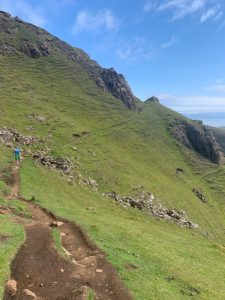
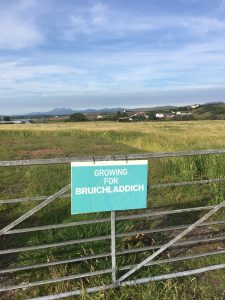
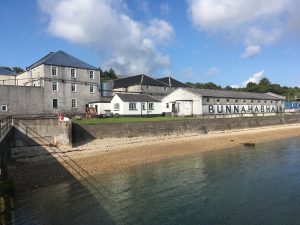
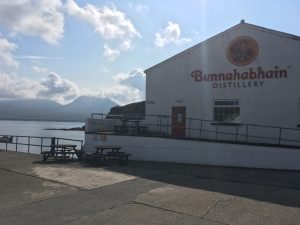
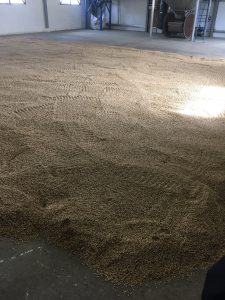
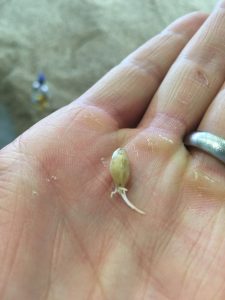
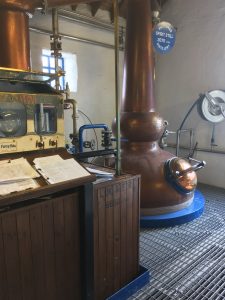
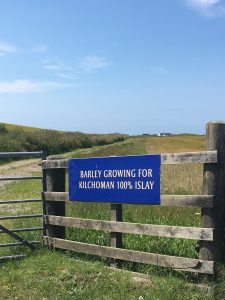
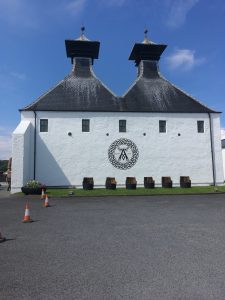
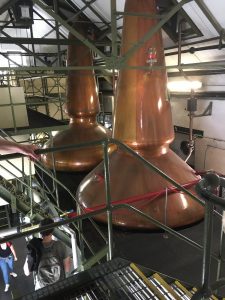
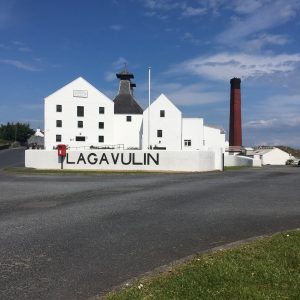
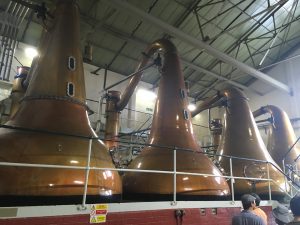
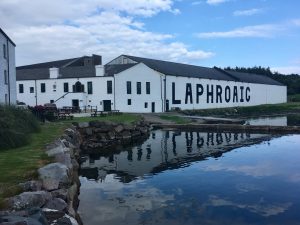
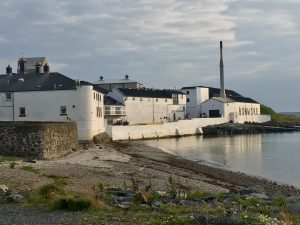
0 Comments